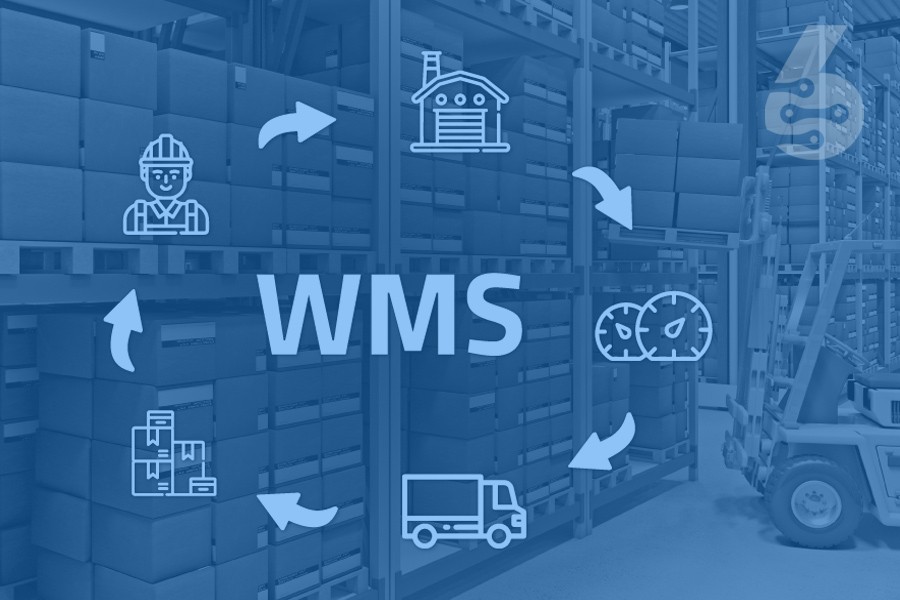- ERP Systems
- 04.04.2023
A Step-by-Step Guide to Planning Your ERP Implementation
All you need to know about EPR implementations in an easy to follow step-by-step guide.
Dr. Andreas Maier
04.04.2023
“ ERP is commonly misperceived as a computer system. Not so. It’s a people system made possible by the computer software and hardware. “
Are you considering implementing an ERP system for your business? If so, you're in luck! This step-by-step guide will walk you through everything you need to do to prepare for your ERP implementation. We'll cover everything from choosing the right vendor to planning your project timeline. So whether you're just starting or already preparing for your implementation, this guide is for you!
Planning your implementation - First steps
Good preparation and planning before your ERP implementation is the key. By taking the time to review and plan out your project, you can ensure that everything runs smoothly from start to finish. Here are some steps you should have taken before you begin planning your implementation:
- Identify your business needs: Before anything else, it's essential to identify what features and functions of an ERP system are necessary for your business. Think about the processes and operations you want to optimize or automate with an ERP system, and list any other functionalities that would benefit your organization.
- Choose a vendor: Once you have identified your needs, it's time to start looking for potential vendors who can provide the ERP system that meets your company's needs. Make sure you research each vendor thoroughly and compare them on features, pricing, customer support, etc.
- Gather a responsible team of people: Once you have chosen a vendor, it's crucial to assemble a team responsible for overseeing the project from start to finish. This team should include stakeholders, IT staff, and anyone else who may need to be involved in the project.
- Provide information to the vendor: We understand that you can not know your entire business, and any detail about every job that is executed at your company. That’s the way it should be, but bare in mind that an ERP will be only as good as the information you provide. It can be easier to provide a plentitude of people to the vendor to extract information, rather than withholding such. In practice we’ve seen such examples, and surprises can be challenging to overcome.
The project timeline
Planning the project timeline is an essential step in the ERP implementation process. A comprehensive timeline will provide a clear overview of when tasks need to be completed and help ensure that all deadlines are met. To start a project, it's crucial to create an overview of deliverables, timelines, and deadlines for each task that needs to be completed during the initial setup.
Seamless is an Understatement – SIX ERP Just Works for you.
Initial setup
The initial setup stage is a crucial part of the ERP implementation process. This is where all the necessary infrastructure and components are configured to ensure the system runs smoothly. During this stage, several tasks must be completed to ensure everything is in place for the actual implementation.
This involves installing hardware, software, and networks to run your ERP system. Additionally, you will need to configure security settings and other administrative tasks to ensure that data is handled securely.
Staff training
Staff training is an integral part of the ERP implementation process, as it ensures that employees can use the new system and understand how it works properly. It also helps reduce user errors and maximizes the system's benefits. When planning staff training, there are a few key things you should consider:
- Determine what type of training is needed: Depending on the system's complexity and your staff's roles, you may need to provide different types of training. For example, basic training for all users, more in-depth training for specific departments or teams, or even one-on-one sessions for individual users.
- Develop a training plan: Once you have determined what type of training is needed, develop a comprehensive training plan that includes the topics, duration, and delivery method for each session.
- Schedule times for staff to attend: Make sure you schedule enough time and resources for your team to attend the necessary training. This should be done well in advance to avoid delays in the implementation process.
Data Conversion
The data conversion stage is the process of transferring existing data from one system to another. This can be a complex and time-consuming task, so it's essential to plan and ensure that all necessary steps are taken to ensure a successful transition. Some things to consider when planning data conversion include:
- Determine which data needs to be migrated: It's essential to identify what data needs to be converted, such as customer accounts, sales records, financial information, and any other relevant data.
- Create a timeline for the conversion process: You should plan out a timeline for the data conversion process that includes when the data should be converted, who will be responsible for different tasks, and any other details.
- Establish a testing protocol: Once you have converted the data, it's crucial to establish a testing protocol to ensure that all of the information is accurate and up-to-date. This should also include a backup plan if anything goes wrong during the data conversion process.
Process redesign
Process redesign is a vital part of the ERP implementation process, as it helps to ensure that the new system works smoothly and efficiently, as processes might not work the same in the digital world. This involves examining existing processes and finding ways to streamline or improve them using the new system's capabilities. Some things to consider when planning process redesign include:
- Document current processes: Before redesigning your procedures, it's essential to document how they currently work. This should include a detailed description of the process, any necessary tasks, and any associated risks or areas for improvement.
- Identify changes that need to be made: Based on your documentation, identify any necessary changes that need to be applied to optimize the process using the new system.
- Document changes: Once you have identified any necessary changes, document them to ensure that your staff understands how the new process works.
Data migration
Data migration is transferring existing data from one system to another. This can be a complex and time-consuming task, so it's essential to plan and ensure that all necessary steps are taken to ensure a successful transition. Some things to consider when planning data migration include:
- Determine which data needs to be migrated: It's essential to identify what data needs to be moved, such as customer accounts, sales records, financial information, and other relevant data.
- Create a timeline for the migration process: You should plan out a timeline for the data migration process that includes when the data should be transferred, who will be responsible for different tasks, and any other details.
- Establish a testing protocol: Once you have transferred the data, it's essential to establish a testing protocol to ensure that all information is accurate and up-to-date. This should also include a backup plan if anything goes wrong during the data migration process.
System testing and validation planning
Once all the data has been successfully transferred and processes have been redesigned, you should test the new system to ensure it is working correctly. This testing process should include functional, performance, security, and other tests as necessary. Additionally, it would be best if you created a validation plan to ensure that the system meets all specified requirements.
Pre-Plan the Go-live support and post-implementation support
Once all the necessary testing requirements have been successfully fulfilled, you should plan for post-implementation support to resolve any issues quickly and efficiently. Additionally, you should develop a go-live support plan that outlines who will be available during the system's launch and how they can provide assistance.
Plan for the ongoing maintenance
ERP implementations typically require some internal team to ensure a successful launch. Depending on the nature of the ERP system, you may need to build or hire an in-house team responsible for training, maintenance, and support. This team should be knowledgeable in both the software and the business processes that will be affected by the system. Additionally, it would help if you planned regular system maintenance to ensure that the system remains up-to-date and that any issues are quickly addressed.
Conclusion
By preparing and planning your ERP implementation thoroughly, you can ensure a successful launch and smooth transition into using the new system. By following these steps, you can ensure that all the necessary steps are taken to ensure a successful system launch. Additionally, a well-planned implementation can help to minimize disruption and ensure that any issues that might occur can be quickly addressed.
Overall, an effective ERP implementation starts with planning and preparation. Taking the time to thoroughly document processes, identify changes, migrate data, test the system, and plan for post-implementation support can help to ensure that your ERP implementation is successful. With proper planning and preparation, you can provide a smooth transition and successful launch of your new ERP system.
A small piece of advice
Your chosen vendor becomes a trusted and integral part of your operations during implementation time and after. Purpose of an ERP implementation is to help your business grow, expand and – after all succeed! Your vendor can’t help you if you withhold information deliberately – or because it is simply not found worthwhile mentioning. The more your vendor knows about the ways you – and your employees work, the more successful the end result!
About the author
Andreas Maier is a results-driven CEO with nearly 30 years of experience in ERP, digital transformation, and IT consulting. He has held leadership positions in Fortune 100 companies such as rentalcars.com (PCLN) and Intrasoft International, a leading EU-based R&D software vendor. With a Ph.D. in Neural Networks from the University of Cologne, Andreas combines deep technical expertise with a strategic approach to business process optimization.
As the founder and co-founder of multiple successful startups, including XXL Cloud Inc., eShopLeasing Ltd, and WDS Consulting SA, his expertise lies in ERP consulting, IT strategy, and process automation. His work is focused on helping businesses implement scalable ERP solutions, streamline operations, and drive digital transformation.
Related articles

Understanding Warehouse Management Solutions
A warehouse management system (WMS) is a software application that supports the day-to-day operations in a warehouse. A WMS helps to control and direct the movement of materials within a...
11 benefits of using ERP systems for SME companies
ERP software can be a great help to businesses of all sizes. ERP can support your company in many ways, from improving inventory management and order fulfillment processes to providing...



